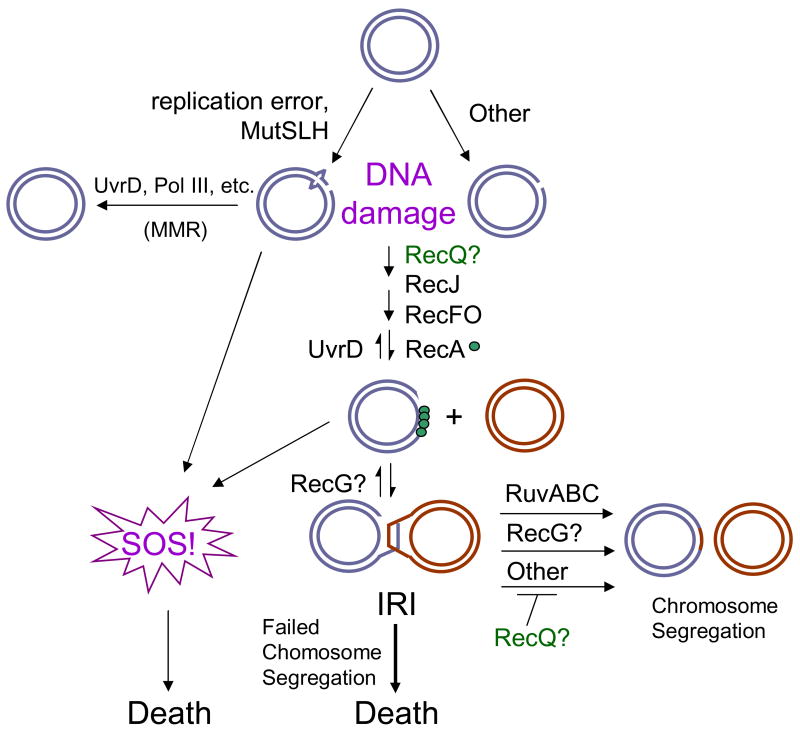Fig. 6.
Models for death of ΔrecG ΔuvrD cells. DNA damage arises from replication errors (mismatches) which are recognized and processed by MutSLH or from other sources. In the presence of UvrD, MMR can be completed to give intact dsDNA. In the absence of UvrD, the damaged DNA is processed by homologous recombination proteins. RecQ and RecJ may function together at this stage to create ssDNA gaps which are substrates for RecF, O and RecA, which can promote both the induction of SOS and the initiation of recombination (formation of IRIs). IRIs are then resolved in multiple pathways, primarily through the action of RuvABC, but also via the action of RecG. Both the persistence of unresolved IRIs and the SOS response can lead to loss of viability (death.) RecG might branch migrate D-loops or IRIs to contribute to their elimination. RecQ might either promote the formation of ssDNA required for IRI formation or inhibit an alternative resolution pathway to Ruv and RecG. Blue and Red circles represent dsDNA.

